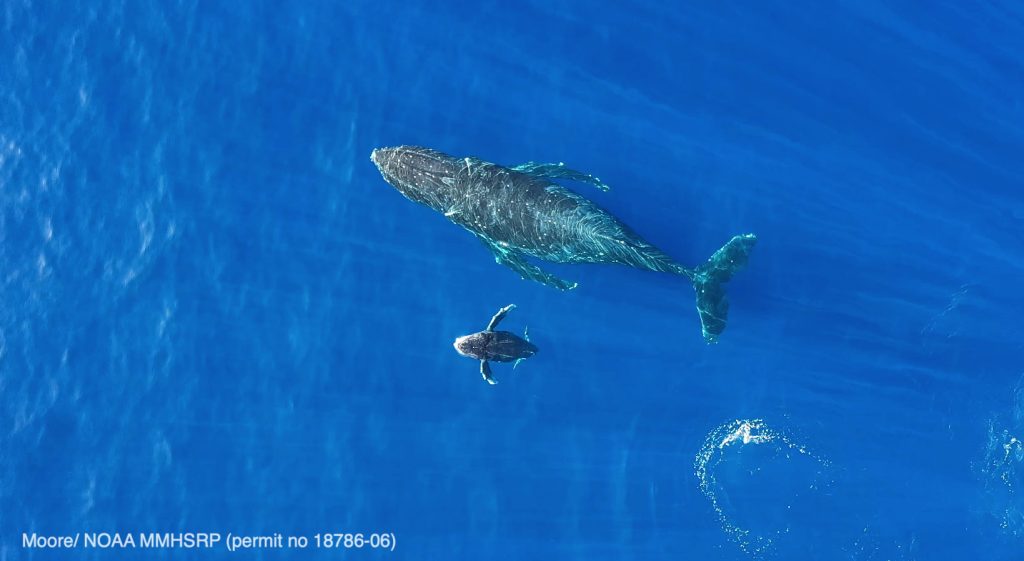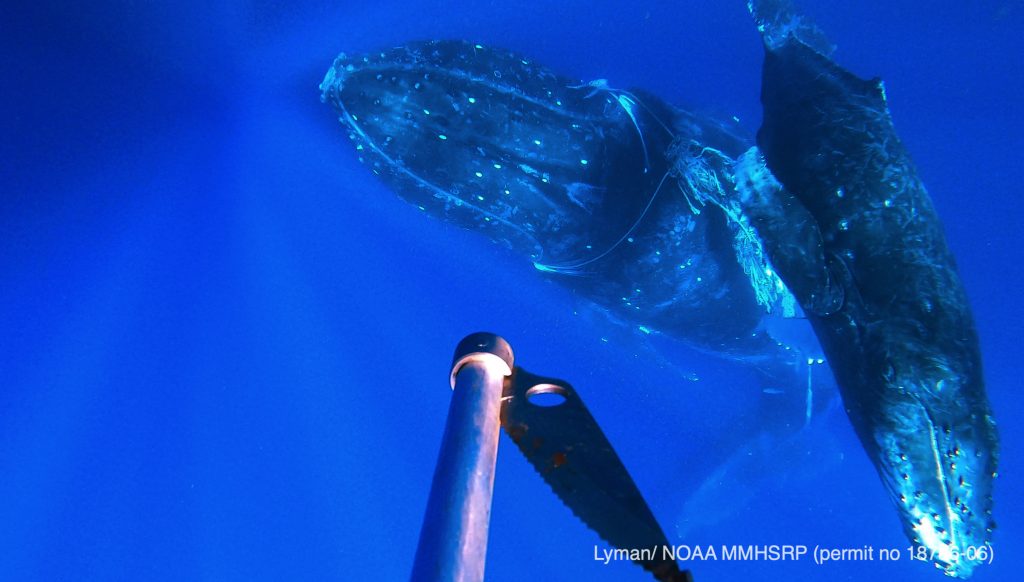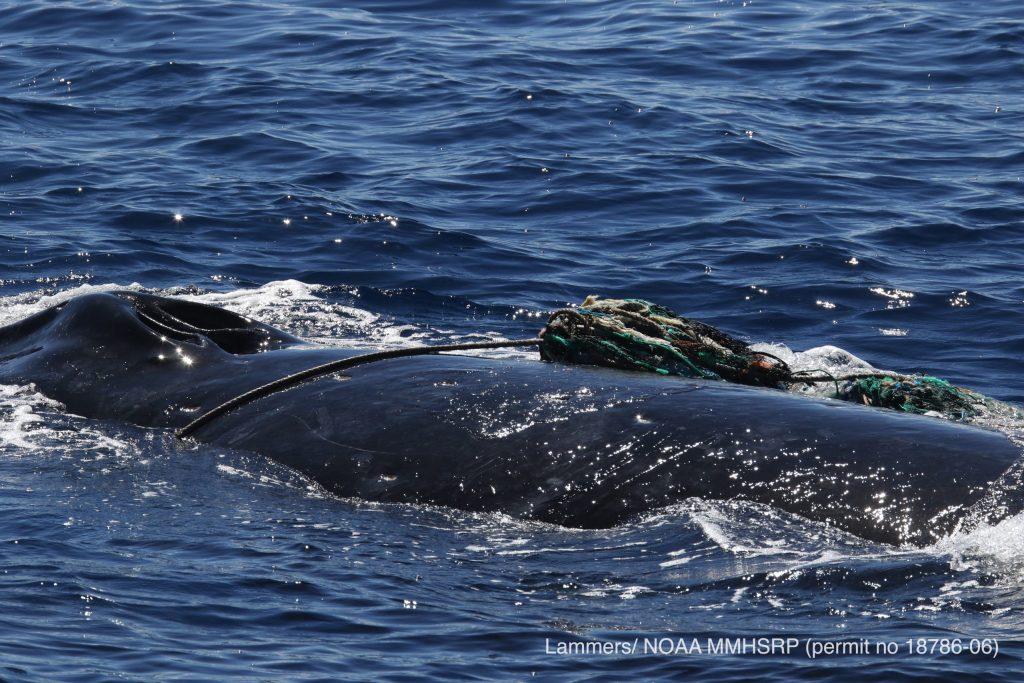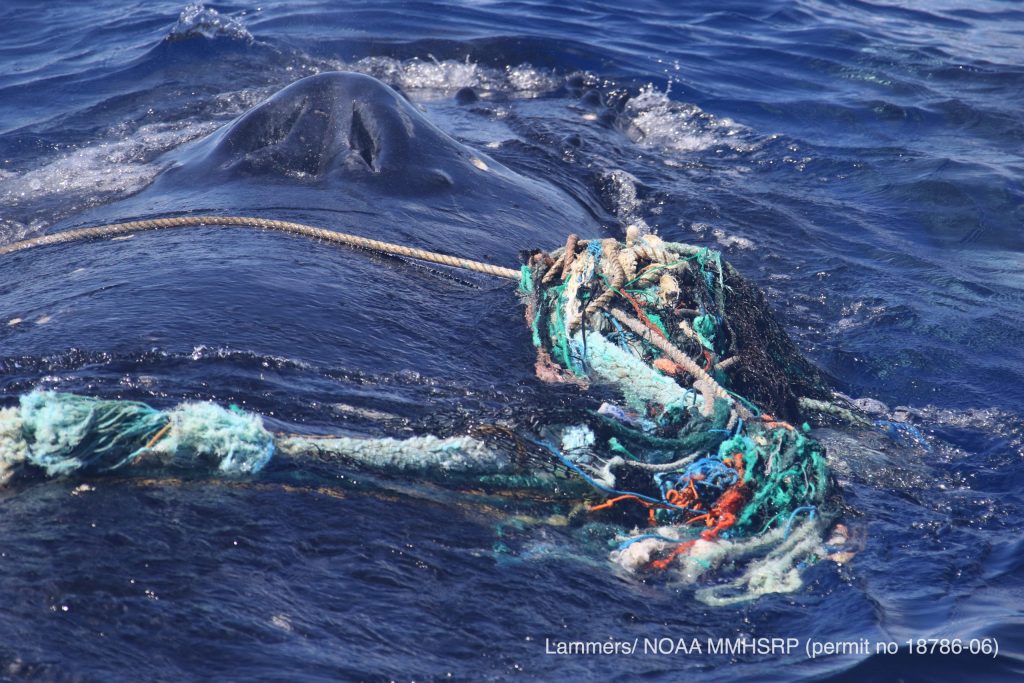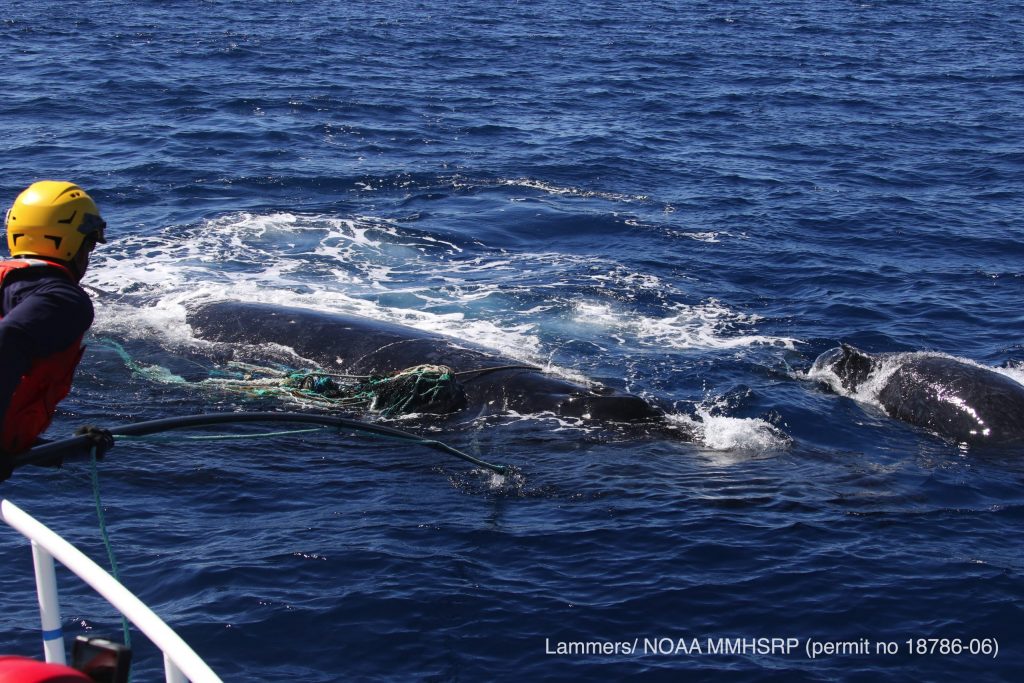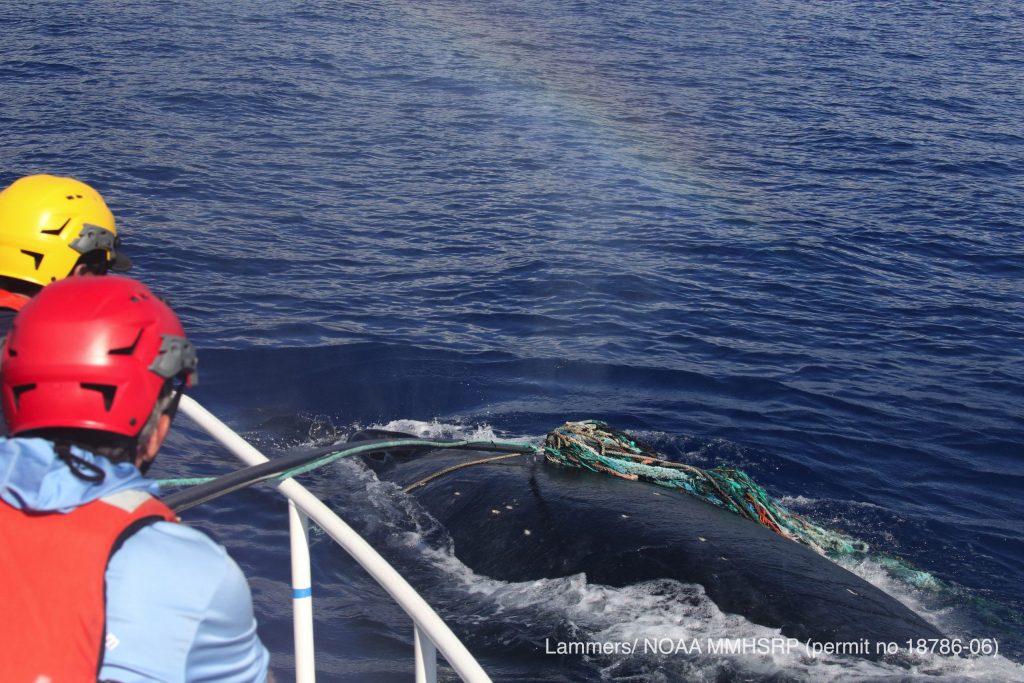Entangled mother humpback freed off Maui, improving survival chances for her and calf
By Wendy Osher
A mother humpback whale was freed of more than 550 feet of line and marine debris wrapped tightly around its head during a disentanglement effort on Monday, Feb. 14, 2022, NOAA officials confirmed. Rescuers say the successful response increased the survival chances for both the mother whale and her calf.
Once freed, the calf was observed “tucking under the mother’s chin,” a sign of “resting behavior,” according to a joint statement from the NOAA Hawaiian Islands Humpback Whale National Marine Sanctuary and NOAA Fisheries.

The entanglement was first reported on Feb. 12, by the tour vessel Nāpali Explorer III, with a re-sighting yesterday by another tour vessel, Trilogy V. “The animal was in fair-to-good condition, but the tight wrap had resulted in line scars near her mouth line. The entanglement posed a significant threat to the mother and her calf, and was deemed life-threatening,” according to the release.
NOAA officials say that in addition to the threat posed to the whale, the tight wrap also posed a danger to the response team because of their need to closely approach the animal for line removal.
The multi-agency Pacific Islands Large Whale Entanglement Response Team, led by trained responders with NOAA, spent six hours outside of Lahaina Harbor on Maui, working to remove the line which was located around the whale’s head, in front of her pectoral flippers.
According to NOAA, there were a dozen different types of lines and netting contributing to the entanglement, including 30 feet of thick line estimated at greater than 1.5 inches in diameter. The agency reports that the gear sank out of reach and couldn’t be recovered, but responders were able to obtain critical documentation to determine its possible origins.
The adult female was accompanied by her calf and a male escort humpback.
How to report a distressed or entangled whale
Mariners are asked not to approach closely or attempt to assist a whale in distress.
“Only trained and well-equipped responders that are authorized under a Marine Mammal Protection Act/Endangered Species Act permit issued to NOAA Fisheries Marine Mammal Health and Stranding Response Program are permitted to assist entangled whales and other marine mammals,” according to NOAA. “Immediately reporting an entangled or otherwise injured or distressed whale, is the best way to help the animal,” the agency advises.
If you see an injured or entangled marine mammal:
- Keep a safe and legal distance.
- Call the statewide NOAA Marine Wildlife Hotline at 888-256-9840.
- Or, the US Coast Guard on VHF channel 16 immediately.
To report a vessel coming too close to a whale:
- Call the NOAA Fisheries Enforcement Hotline at 800-853-1964.
- Or email [email protected].
Guidelines around whales
It is illegal to approach a humpback whale closer than 100 yards by any means by sea or drone and closer than 1,000 feet by aircraft.
New recommendations for boat speeds around humpbacks were announced yesterday by the State of Hawaiʻi, Department of Land and Natural Resources. Boaters are being asked to reduce transit speeds to 15 knots or less, and slow to six knots when within 400 yards of humpbacks, when approaching and departing the area.
Additional guidelines and safety tips can be found online at the Hawaiian Islands Humpback Whale National Marine Sanctuary website.
Additional information:
The response team included Hawaiian Islands Humpback Whale National Marine Sanctuary, the Ultimate Whale Watch dedicated and trained response team, the US Coast Guard from Station Maui, NOAA Office of Law Enforcement, NOAA Corps, Cardinal Point Captains, and University of Hawaʻii at Mānoa – Marine Mammal Research Program.
Shoreside support was provided by NOAA Fisheries and the state of Hawaiʻi Division of Aquatic Resources. The sanctuary’s research and response vessel, Koholā, acted as the primary approach vessel, while patrol vessels from the USCG and OLE provided safety and support. MMRP provided monitoring and aerial assessment support.



